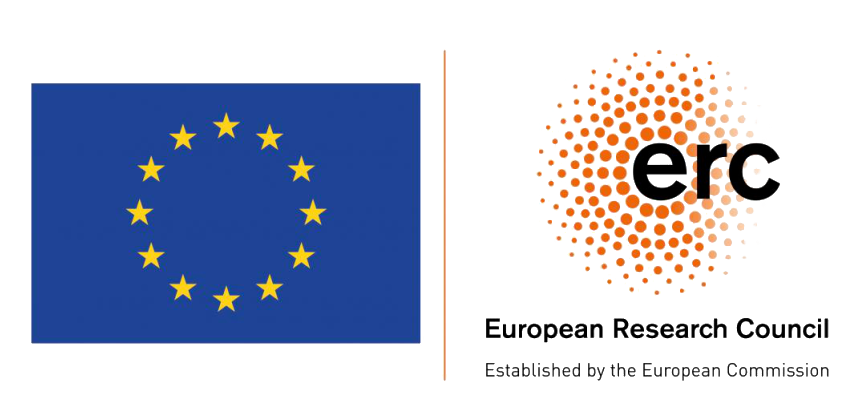Scope and purpose
The lexicographic entries in the Digital Encyclopedia of Atticism provide a philological and linguistic commentary on words and linguistic phenomena featured in the main Atticist lexica of the 2nd–3rd centuries CE: Phrynichus’ Eclogue and Praeparatio sophistica, the Antiatticist, Moeris’ lexicon and Pollux’ Onomasticon. This is the main corpus investigated by PURA and in DEA. Passages from later lexicography and other erudite sources also feature prominently in our work. The content of the lexicographic entries can be searched through the Search tool.
Titles
The title of each entry contains the lemma or linguistic phenomenon with which the entry is concerned, followed by a reference to the Atticist source(s) that discuss it (in brackets). For example, the title ‘μᾶλλον μᾶλλον (Antiatt. μ 21)’ refers to an entry concerned with the reduplicated expression μᾶλλον μᾶλλον ‘more and more’, which is the object of the Antiatticist entry μ 21.
Referencing system: ancient authors and works, abbreviations
Where possible, names of ancient authors and works are abbreviated. We follow LSJ and the updated list of the Diccionario Griego–Español except for those cases listed under Abbreviations (under ‘2. Ancient authors’). To avoid overburdening the text of the entries, we have omitted the name of the editor(s) of frequently cited editions. For example, we omit ‘Fischer’ for the Eclogue, ‘Valente’ for the Antiatticist, ‘Kassel–Austin’ for comic fragments, etc. Please see Reference editions of erudite sources for a list of the most frequently cited works.
Some common bibliographical resources are cited with abbreviations (e.g., DELG for Chantraine’s Dictionnaire étymologique): for a complete list, please see Abbreviations (under ‘4. Bibliographical abbreviations’).
Regarding our use of epigraphic and papyrological sources and references, please see Abbreviations (under ‘3. Papyri and inscriptions’) and here below, under Editorial conventions.
Structure of entries
Lexicographic entries are of two types: basic and extended. They are distinguished by the presence of a commentary or not.
Basic entries consist of Greek texts that are relevant to the given lemma, along with their translation. Greek texts are distributed into three sections: A. Main sources; B. Other erudite sources; C. Loci classici, other relevant texts (see below for details). These basic entries may be expanded with a full commentary in the future.
In extended entries the part featuring the Greek texts is followed by a second part, devoted to the philological and linguistic commentary on the given lemma. This always includes a general commentary (section D). An additional commentary, addressing Byzantine and – where appropriate – Modern Greek may be contained in a further section (E). Comments of a textual nature pertaining to the texts discussed in the entry may be addressed in a further section (F). Not all of the entries have these two additional sections (E–F). Through this structure, readers can locate different kinds of information distributed across different layers of the entries. Internal links within the entry, and across different entries (marked by the symbol), enable users to navigate the content of the lexicographic section of DEA. When links redirect to entries marked as “forthcoming”, the content of the entries is not yet available and will be uploaded in the near future.
Section A. Main sources
This section only contains the entries in Atticist lexica and other entries in ancient Greek scholarship that deal specifically with a given lemma or linguistic feature, followed by their translation. Each text is numbered consecutively to enable cross-referencing within the entry (e.g., A.1 will refer to text 1 under section A). Where required, a succinct apparatus is provided. The apparatus, while following the usual philological conventions, seeks to avoid less obvious abbreviations and Latin, privileging English.
Section B. Other erudite sources
This section contains other sources that are useful for elucidating a given lemma. This structure aims to create, as much as possible, a hierarchy of erudite sources, distinguishing between lexicographical entries that are deemed to be more relevant and other scholarly works (e.g., other Atticist and later lexica, scholia, Byzantine erudition, grammatical treatises, etc.). Here too each text is numbered consecutively (B.1, B.2, etc.) to enable cross-referencing within the entry.
Section C. Loci classici, other relevant texts
This section contains literary, epigraphic and papyrological sources that are useful for clarifying the linguistic history of a given word or linguistic phenomenon, each provided with a translation. The section includes both loci classici in the strict sense of the term, i.e., the texts quoted by the ancient lexica themselves, and any other texts discussed in the commentary provided in the entry. Texts are once again numbered consecutively (C.1, C.2, etc.).
For fragments consisting of the sole word cited in an ancient lexicon, we follow the model ‘Alex. fr. 186 = Antiatt. μ 21 re. μᾶλλον μᾶλλον (A.1)’. That is, we do not treat μᾶλλον μᾶλλον itself as a textual fragment, because there is no way of saying whether the quoting text does, or does not, provide an actual quotation. We therefore cannot recover how the quoted word or expression appeared in the quoted text.
Section D. General commentary
The General Commentary constitutes the main part of the entry. It addresses the doctrine that emerges from Atticist lexicography concerning a given word/feature in the light of the linguistic history and use of the word in context. The length and level of detail of each General Commentary varies and depends upon the nature of the lemma, as well as the inclination and expertise of the author of the entry.
Section E. Byzantine and Modern Greek commentary
As aforementioned, this additional section will be provided only for entries that deal with features that are significantly developed in Byzantine and Medieval Greek (and, when attested, in Modern Greek).
Section F. Commentary on individual texts and occurrences
This additional section is used, where appropriate, to add further philological, literary, and textual notes to the commentary on individual texts. The purpose of this section is to avoid burdening the main commentary with information that may only be tangentially relevant to the main topic of the entry. For example, in this section the author of the entry may discuss passages with a difficult textual history, or that need further contextualisation. For instance, in the entry on μᾶλλον μᾶλλον section F.1 discusses the textual arrangement of Antiatt. μ 21 in cod. Coisl. 345.
Section ‘Bibliography’
Each entry contains a Bibliography that lists all bibliographical references in the text except for standard editions and abbreviations (see above).
Editorial conventions
We follow the house-style of Edizioni Ca’ Foscari (accessible here), with minor modifications. Please note the following conventions specific to DEA:
- All ancient texts, including inscriptions and papyri, are always cited with Arabic numbers. E.g.: Hdt. 2.12, IG 12.30, P.Oxy. 10.1234.
- In translations of ancient texts, square brackets are used for integrations of words that are not present in the original text, to aid comprehension.
- In translations of ancient texts, round brackets are used for editorial comments, exegetical or metalinguistic notes: e.g., ‘καλός (‘beautiful’)’.
- Abbreviations for ancient authors and works follow LSJ and DGE, except for those listed in the Abbreviations section.
- For lesser-known ancient authors or ancient texts for which there is more than one authoritative edition, we provide the names of editors (these are usually not included in the Bibliography and can be easily retrieved through the TLG canon or other bibliographical tools). For example: Call. fr. 1 Hollis (= fr. 1 Pfeiffer), Mich. Psell. Hist. brevis 50 Aerts.
- Epigraphical abbreviations follow the GrEpiAbbr of the AIEGL – Association Internationale d’Épigraphie Grecque et Latine.
- Papyrological abbreviations follow the Checklist of papyri.info.
- In the quotations of inscriptions and papyri, we avoid overburdening the texts with underdots except for when it is strictly necessary. In such cases, a note in the apparatus explains the rationale behind each choice.
- Sigla of ancient manuscripts (e.g., for scholia or other texts) are always provided within brackets: e.g., schol. Ar. Eq. 1234 (VEΓ), Poll. 1.20 (ABC).
Symbols
- ~ is used for erudite sources that share the same doctrine with minor modifications (e.g., Et.Gud. α 715 ~ EM 90.33–7)






